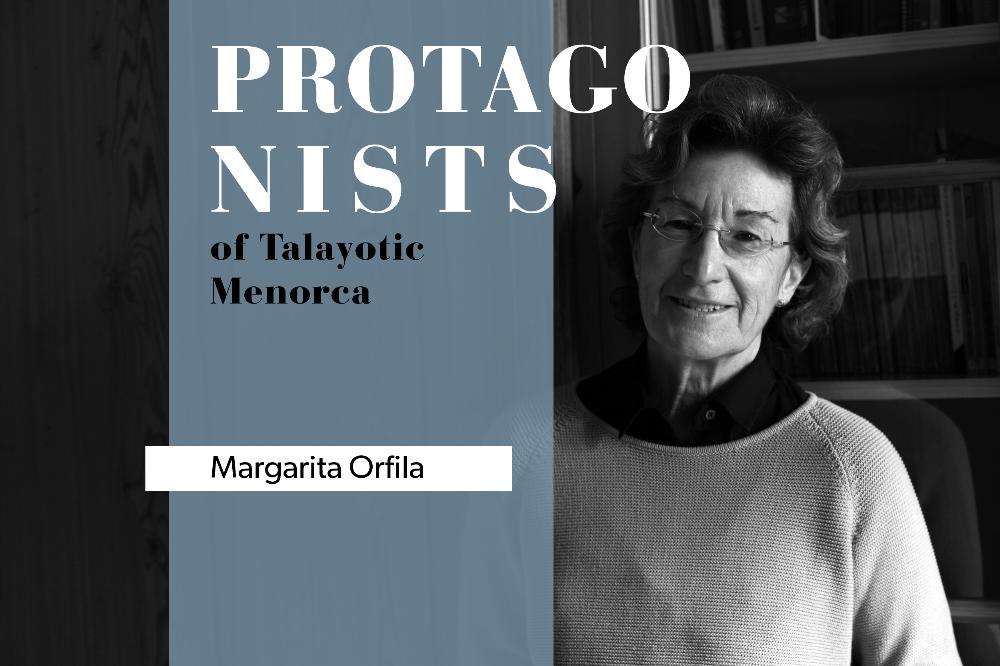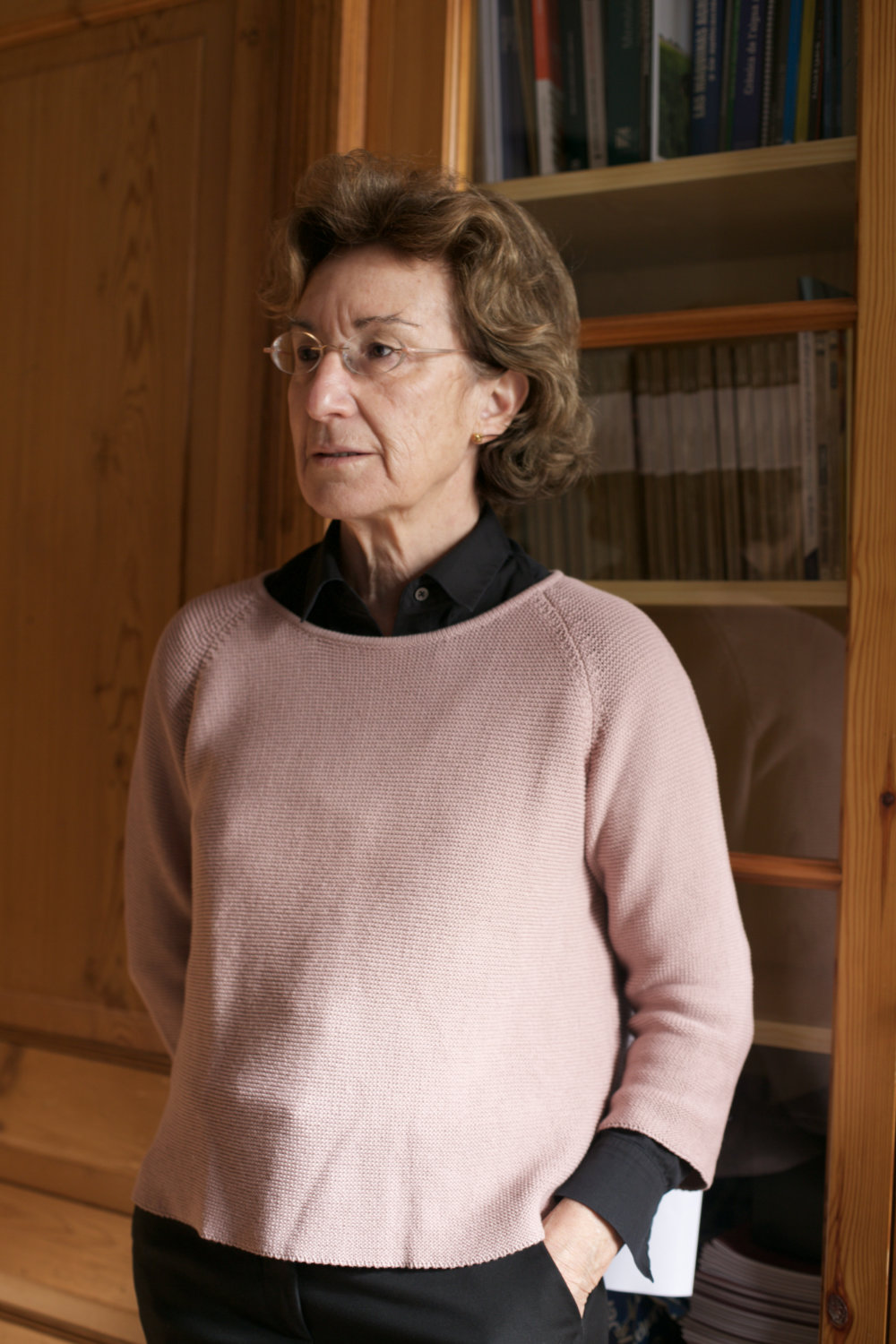 Margarita Orfila is a fomer Professor of Archeology at the University of Granada, where she taught for good part of her career, as well as at the University of the Baleric Islands and the University of Valencia. Dr. Orfila specializes in the Roman world and is currently the president of the Ateneu de Maó. She has directed the excavations of Pollentia (Alcúdia, Mallorca) and Cova dels Jurats in Calescoves (Menorca), among others.
Margarita Orfila is a fomer Professor of Archeology at the University of Granada, where she taught for good part of her career, as well as at the University of the Baleric Islands and the University of Valencia. Dr. Orfila specializes in the Roman world and is currently the president of the Ateneu de Maó. She has directed the excavations of Pollentia (Alcúdia, Mallorca) and Cova dels Jurats in Calescoves (Menorca), among others.
How did your interest in archeology start?
Very simple, I was lucky enough to spend the summers of my childhood in Calescoves, coinciding when Cristóbal Veny was carrying out his excavations there. It was like playing a game, every morning with the archaeologists, a game that ended up being my profession.
The Cova dels Jurats, in the Calescoves necropolis, was the focus of your latest research in Menorca. What sparked your interest in this site, leaving childhood memories aside?
The cave has always attracted the attention of many researchers. The Roman cave inscriptions at the entrance, made known by Joan Ramis in 1817; a grotto of about 20 meters in length sealed by the detachments of the ceiling, which only left space enough to intervene in a side corridor and part of its bottom; and the evidence that it had not been used for burials, as were the other one hundred caves that give the inlet its name, were some of the reasons for an archaeological intervention there. Ever since I began my academic career, dedicating myself to Roman times, I had always kept in mind that one day I would investigate this cave. It was a priority to create a team of archaeologists and philologists, as we did with Dr. Marc Mayer, a highly prestigious philologist and epigraphist; Giulia Baratta, professor at the University of Macerata (Italy); and myself. The results were very useful to learn more about the cultural activities of the Menorcans from the II century BC, until the mid III century AD.
 The excavations determined that it was the first rock sanctuary ever documented in the Talayotic culture. Since when was it in use? How was the process that led you to this conclusion?
The excavations determined that it was the first rock sanctuary ever documented in the Talayotic culture. Since when was it in use? How was the process that led you to this conclusion?
The archaeological and philological evidence was very clear, as was the repetition of a date in the inscriptions carved into the rock: the XI Kal(endas) Maias, which is equivalent to April 21st, the day that Romulus founded Rome in 753 BC, as Roman sources indicate. A very important date in the Roman calendar, which was not only about its foundation, but also a day dedicated to the goddess Parilia, protector of births. This data that lead us to propose that we were faced with a sanctuary dedicated to these two events. Moreover, in Dr. Mayer’s study it was possible to verify that these inscriptions were dated - the date could not be identified in all of them due to the poor state of conservation they presented -, since they are headed by consular references, which was the way to indicate the year in Roman times. The oldest, around the year 125 AD; the most modern, around 230 AD.
On the other hand, the excavation inside the cave determined the appearance of sacred uses which started at the end of the III century BC and that therefore, this was the only cave sanctuary related to the Talayotic culture, where comensality was a habit. Also that it was frequented until the end of the III century AD, coinciding with the dates of the last external inscriptions that have been dated.
Among the most recent studies on Talayotic culture, which one would you highlight?
Buff, I could not highlight any, given that all the interventions that have been developed in recent decades are highly important. Those of the Càrritx, Mussol or El Pas caves have given impressive information about the world of the dead in Menorca’s prehistory, as corroborated in the Biniedris cave, where work is still ongoing. The excavations in Cornia Nou, everything that is carried out in Torre d'en Galmés, the interventions in Son Catlar, those that were carried out in Talatí, the works about the taula enclosures …
In 2009, when you were the head of the History and Archeology department at the Institut Menorquí d’Estudis (IME), you proposed the department present the first Talayotic Menorca candidacy to UNESCO, which was later assumed by the Consell Insular de Menorca. What made you take that first step that would set the whole process in motion?
I think that the interventions in Cornia, with that passageway in the small talayot ??or the staircase of the major, somehow made me reflect on its monumentality, uniqueness and spectacularity, in addition to the incredible state of conservation of Menorca’s prehistorical assets. Also the density of the amount of sites and that they have endured and have been used in some way to this day. Here, I want to remember Don Juan Hernández Mora and his phrase about how Archeology is "History that can be seen", and our remains can really be seen, and damn well! When this topic came up in the IME department, all the members present at that meeting agreed that we should aspire for the Talayotic culture of Menorca to be declared World Heritage.
On the other hand, the fact that there are very few prehistoric properties in Spain declared World Heritage by UNESCO was another of the spurs. Furthermore, it should not be overlooked that when an asset, or a nominated property as is our case, receives that distinction, the so-called cultural tourism increases by more than 50% and is not seasonal. These factors also weighed in when proposing the candidacy in the IME History and Archeology department.
As a member of the candidacy’s Permanent Commission, you have contributed with your writing and reviews to the new file that has been recently presented at UNESCO's Paris headquarters. How has it improved when comparing to the previous one?
The documentary basis of the first file was very important, that was a job already done and that must be highlighted. The most substantial change comparing to the previous file is that all the information is now linked through a tale. The previous one was more focused on presenting the properties of the candidacy itself. I believe that Cipriano Marín`s work is impressive, and all those who have been involved in this exciting project have given cover and enriched the current file. The entire series of meetings, both of the Permanent Commission and those that have been organized with external members, have enhanced the final result of this document. Let's say we had a rough diamond and that in these years it has been polished.
As president of Ateneu de Maó, what activities have been carried out to support the candidacy?
Well, in this sense, a great diversity of activities have been carried out in recent years and in support of the first declaration attempt: from conference cycles, such as the one that talked about archaeological World Heritage Sites in Spain; to project presentations. However, we catch ideas on the fly and we will surely organize something else between now and the first half of 2022. The desire and enthusiasm for this candidacy is there!